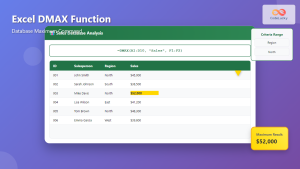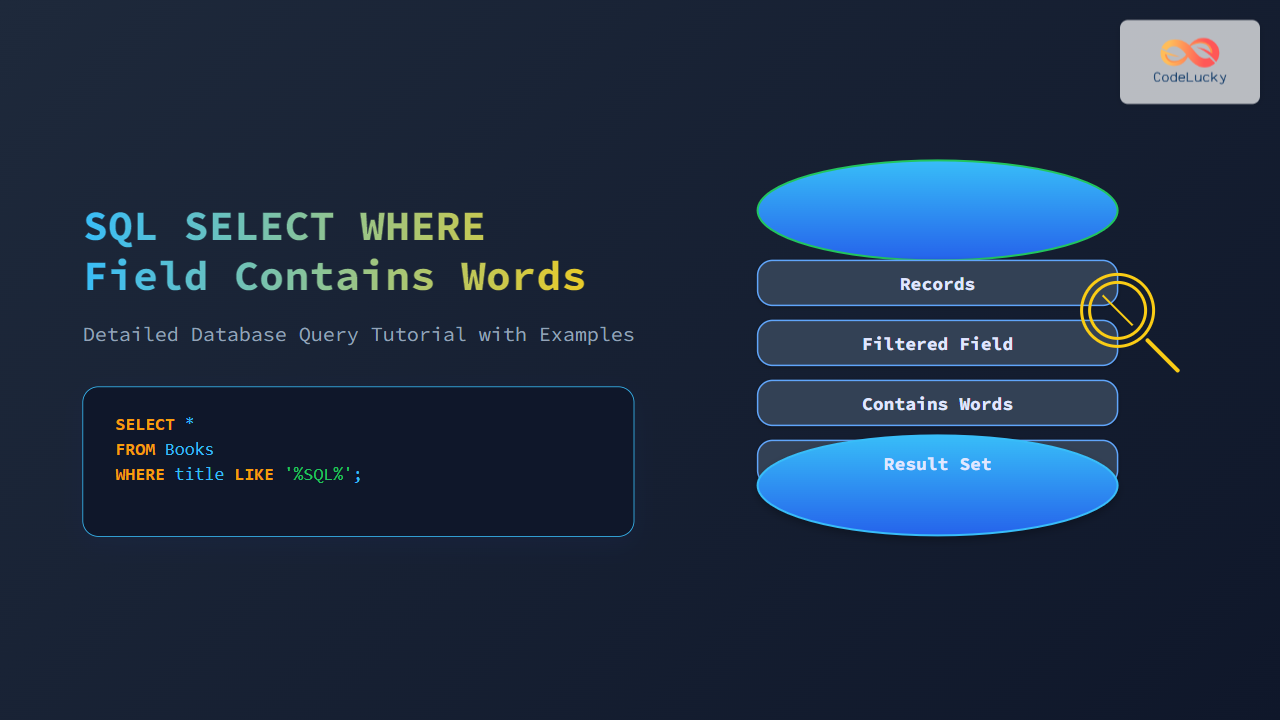SQL's MAX() function is a powerful tool in a database developer's arsenal, allowing you to quickly find the highest value in a set of data. Whether you're looking for the most expensive product, the latest date, or the highest score, MAX() is your go-to function. In this comprehensive guide, we'll dive deep into the MAX() function, exploring its syntax, use cases, and advanced applications.
Understanding the MAX() Function
The MAX() function is an aggregate function in SQL that returns the maximum value from a set of values. It's part of the SQL standard and is supported by all major database management systems, including MySQL, PostgreSQL, SQL Server, and Oracle.
Basic Syntax
The basic syntax of the MAX() function is straightforward:
SELECT MAX(column_name) FROM table_name;
This query will return the highest value in the specified column.
🔍 Pro Tip: The MAX() function ignores NULL values. If all values in the column are NULL, MAX() will return NULL.
Practical Examples of MAX()
Let's explore some practical examples to see how MAX() works in real-world scenarios. We'll use a sample database of an online bookstore for our examples.
Example 1: Finding the Most Expensive Book
Suppose we have a table named 'books' with the following structure:
| book_id | title | author | price |
|---|---|---|---|
| 1 | To Kill a Mockingbird | Harper Lee | 12.99 |
| 2 | 1984 | George Orwell | 10.99 |
| 3 | Pride and Prejudice | Jane Austen | 9.99 |
| 4 | The Great Gatsby | F. Scott Fitzgerald | 14.99 |
To find the price of the most expensive book, we can use:
SELECT MAX(price) AS highest_price FROM books;
Result:
| highest_price |
|---|
| 14.99 |
This query returns the highest price from the 'price' column.
Example 2: Finding the Latest Publication Date
Let's add a 'publication_date' column to our 'books' table:
| book_id | title | author | price | publication_date |
|---|---|---|---|---|
| 1 | To Kill a Mockingbird | Harper Lee | 12.99 | 1960-07-11 |
| 2 | 1984 | George Orwell | 10.99 | 1949-06-08 |
| 3 | Pride and Prejudice | Jane Austen | 9.99 | 1813-01-28 |
| 4 | The Great Gatsby | F. Scott Fitzgerald | 14.99 | 1925-04-10 |
To find the most recent publication date:
SELECT MAX(publication_date) AS latest_publication FROM books;
Result:
| latest_publication |
|---|
| 1960-07-11 |
This query returns the most recent date from the 'publication_date' column.
Advanced Uses of MAX()
The MAX() function becomes even more powerful when combined with other SQL features. Let's explore some advanced applications.
Using MAX() with GROUP BY
The GROUP BY clause allows us to apply MAX() to subsets of our data. Let's add a 'genre' column to our 'books' table:
| book_id | title | author | price | genre |
|---|---|---|---|---|
| 1 | To Kill a Mockingbird | Harper Lee | 12.99 | Fiction |
| 2 | 1984 | George Orwell | 10.99 | Sci-Fi |
| 3 | Pride and Prejudice | Jane Austen | 9.99 | Romance |
| 4 | The Great Gatsby | F. Scott Fitzgerald | 14.99 | Fiction |
| 5 | Brave New World | Aldous Huxley | 11.99 | Sci-Fi |
To find the highest-priced book in each genre:
SELECT genre, MAX(price) AS highest_price
FROM books
GROUP BY genre;
Result:
| genre | highest_price |
|---|---|
| Fiction | 14.99 |
| Sci-Fi | 11.99 |
| Romance | 9.99 |
This query groups the books by genre and then finds the maximum price within each group.
Combining MAX() with Subqueries
We can use MAX() in subqueries to find records that match the maximum value. For example, to find the book(s) with the highest price:
SELECT book_id, title, author, price
FROM books
WHERE price = (SELECT MAX(price) FROM books);
Result:
| book_id | title | author | price |
|---|---|---|---|
| 4 | The Great Gatsby | F. Scott Fitzgerald | 14.99 |
This query first finds the maximum price using a subquery, then selects all books that match that price.
🎓 Learning Point: This technique is particularly useful when you need to find all records that match a maximum value, not just the value itself.
Using MAX() with Window Functions
Window functions allow us to perform calculations across a set of rows that are related to the current row. We can use MAX() as a window function to compare each row's value to the maximum in a partition.
Let's say we want to see how each book's price compares to the highest price in its genre:
SELECT
book_id,
title,
genre,
price,
MAX(price) OVER (PARTITION BY genre) AS genre_max_price
FROM books;
Result:
| book_id | title | genre | price | genre_max_price |
|---|---|---|---|---|
| 1 | To Kill a Mockingbird | Fiction | 12.99 | 14.99 |
| 4 | The Great Gatsby | Fiction | 14.99 | 14.99 |
| 2 | 1984 | Sci-Fi | 10.99 | 11.99 |
| 5 | Brave New World | Sci-Fi | 11.99 | 11.99 |
| 3 | Pride and Prejudice | Romance | 9.99 | 9.99 |
This query shows each book along with the highest price in its genre, allowing for easy comparison.
Common Pitfalls and Best Practices
While the MAX() function is straightforward, there are some considerations to keep in mind:
-
NULL Values: Remember that MAX() ignores NULL values. If you need to consider NULL as a potential maximum, you'll need to use alternative methods.
-
Performance: On large datasets, using MAX() can be slower than other methods. For frequently accessed maximum values, consider maintaining a separate column with pre-calculated maximums.
-
Ties: MAX() only returns a single value. If you need to handle ties (multiple records with the same maximum value), you'll need to use additional techniques.
-
Data Types: Be aware of how MAX() behaves with different data types. For example, with strings, it returns the value that would be last in alphabetical order.
Conclusion
The SQL MAX() function is a versatile tool for finding the highest value in a dataset. From simple queries to complex analyses, MAX() can help you extract valuable insights from your data. By combining MAX() with other SQL features like GROUP BY, subqueries, and window functions, you can perform sophisticated data analysis tasks.
Remember, the key to mastering SQL is practice. Try out these examples, experiment with your own data, and you'll soon find yourself using MAX() and other SQL functions with confidence and creativity.
🚀 Challenge: Try creating a query that finds the highest-priced book for each author in our sample database. How would you handle authors with multiple books?
By understanding and effectively using the MAX() function, you're well on your way to becoming an SQL expert. Keep exploring, keep querying, and keep pushing the boundaries of what you can do with your data!


















